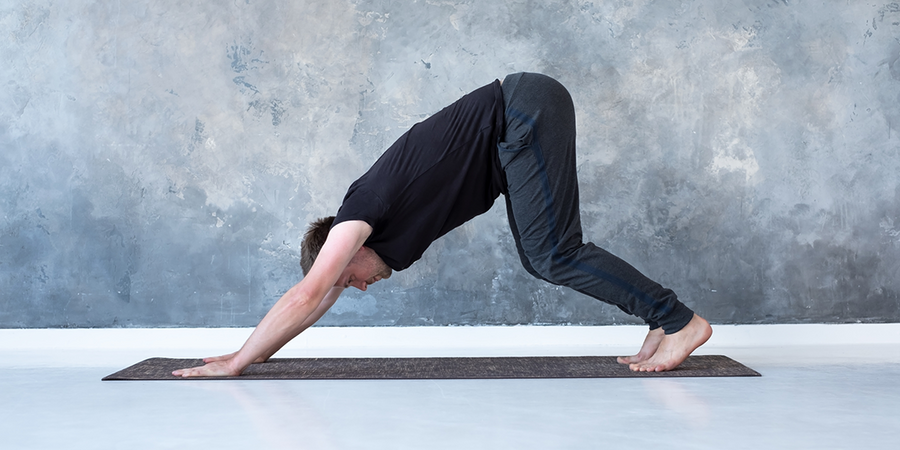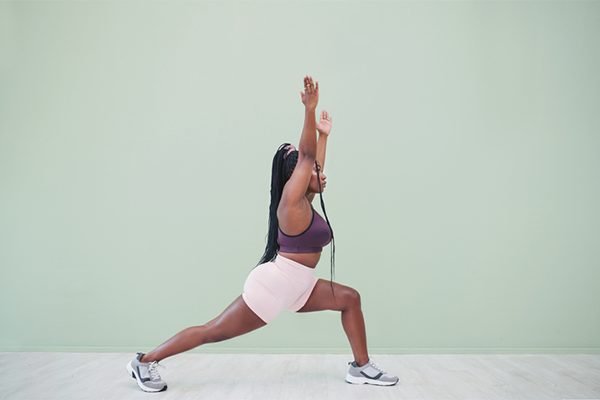
Fast Workout Warm-Up: Do These 4 Moves Before Lifting
By Brian Sabin
If your idea of warming up means walking on the treadmill and doing a few light sets on the bench, it might be time to rethink your approach to training sessions, says Martin Rooney, CSCS, strength coach and founder of Training for Warriors.
Odds are your body needs a little more love if you want to see results and stay healthy. Increases in strength, improvements in range of motion, and even the smallest aches and pain can usually be traced not to the workout itself, but to before you even begin.
Specifically, how you spend the 5 to 10 minutes warming up your body can make the difference between a great workout or feeling stuck in an ongoing plateau, adds Rooney.
Tackle your toughest workouts with the extra energy, endurance, and focus from LADDER Pre-Workout.
.
Benefits of a Workout Warm-Up

You'll hear all of the reasons to make sure you exercise, but warm-ups rarely get the amount of attention they deserve. If you start a workout without warming up, you could potentially be leaving several benefits on the table.
Here are a few reasons your body wants you to warm up:
1. Injury prevention
Study after study shows that preparing your muscles for activity decreases the risk of injury. And, this doesn't mean you have to stretch. You just need to get your body ready.
2. Improved blood flow
Movement warms up your muscles, which increases your heart rate and blood flow. The more you improve blood flow, the less likely your muscles are to suffer from strains or injuries during your workout.
3. Activated nervous system
Ever wonder why you can't seem to get stronger or you find yourself yawning during workouts? Well, it might be because your nervous system is still "asleep" when you start your workout. A good warm-up should change all of that. Not only should it prepare your mind to workout, it should also stimulate all your major muscle groups.
.
Separating Warmup Myths from Facts
For some people, their warm-up consists of some cardio — maybe a five-minute jog — or a couple of arm circles.
While that is certainly better than nothing, an effective warm-up will include several exercises that help activate your muscles, increase range of motion, and target areas that commonly get injured.
Plus, without a proper warm-up to counteract the effects of long periods of sitting at work and other sedentary habits, you probably won't be going into the gym ready to perform. You need to prepare your body for the stress you're about to create.
That's exactly why a good warm-up will prime your muscles for a better session and speed your recovery afterward. A cold muscle is dangerous, but a warm muscle will conduct more energy and be more pliable and prepared to perform.
.
The 4-Move Weight Training Warmup Routine
There is no perfect length for a warm-up — some people need more time and others need less. But here are a few basic movements that require no equipment and would make any strength coach nod with approval.
The key: Make sure you keep moving. These exercises aren't designed to tire you out, but you should perform them at a pace that elevates your heart rate and gets you ready to work.
1. Squats

Target: Lower-body muscle activation
- Stand tall with your hands by your sides, feet shoulder-width apart, and toes pointed forward.
- Keeping your back flat and core braced, push your hips back, bend your knees, and lower your body until your thighs are parallel to the floor. You want to “sit" into the exercise, pushing your butt back like you're lowering yourself onto a chair or bench. Never bend forward at your waist — that will only increase the stress on your spine and throw you off balance.
- Pause, and then push yourself back up to the starting position.
2. Push-ups

Target: Upper body muscle activation and shoulder health
- Your feet should be together and your hands should be slightly wider than shoulder width. If you want to make the move a bit easier, you can separate your feet slightly.
- Throughout the movement, your head and hips should be in alignment with your spine, and your body should form a straight line from the crown of your head to your heels. Clench your glutes and brace your core to lock your body into position.
- When you lower yourself down, keep your elbows tucked close to your body. They should form a 45-degree angle to your torso when viewed from above.
- In the lowest position of the move, your chest should be about a few inches from the floor.
- As you come up, your shoulders and torso shouldn't twist, and the weight of your upper body should be evenly distributed between your two hands.
3. Runner's lunge

Target: Hip mobility
- Assume a pushup position: hands and balls of your feet on the floor, both shoulder-width apart, and your body straight from head to heels.
- Step your right foot to a point just outside your right hand. (Your knee rests next to your right shoulder). If possible, lower your elbows to the floor.
- Hold for a second if dynamic and about 30-seconds for static. Reverse the move to return to the starting position
- Repeat the entire sequence on your other side.
4. Inchworm
Target: Full body range of motion, core activation
- Stand tall with your feet hip-width apart and your arms at your sides.
- Keeping your core engaged and back flat, hinge forward at your hips and place both palms on the floor. Bend your knees slightly if necessary.
- Walk your hands forward until you assume a high-plank position. Your wrists should be directly under your shoulders and your body should be straight from head to heels.
- Reverse the movement, walking your hands back toward your feet, to return to the starting position.



